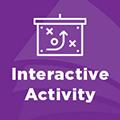
Speaking the Same Language: Bridging Cultural and Linguistic Barriers in Palliative Care
Hospice and palliative care providers recognize the value of effective communication to facilitate exploration of patients' and families' values and goals; however, many providers struggle to perform these key tasks when patients cannot communicate in English or have cultural norms which differ significantly from their own. Concepts such as autonomy and patient self-determination, 'truth telling'/disclosure of difficult news, shared decision making, as well as the acceptability of various treatments and communication techniques may present invisible barriers for palliative care providers working across cultures.
These barriers may be in addition to those related to English proficiency. Nearly 1 in 12 American residents report Limited English Proficiency (LEP), and these individuals are particularly vulnerable to poor understanding of their disease, prognosis, and options for healthcare. The combination of linguistic barriers, cultural differences and misunderstandings may result in disparities in the quality or availability of healthcare for diverse patient populations. They may also raise the potential for moral distress among providers who may feel misunderstood. In this session, we will describe the common challenges that arise when providers care for patients when cultural or linguistic differences are present, and will present strategies to bridge these divides, through individual provider-level practices and in programmatic or systemic interventions.
Through didactic presentation, small group exercises, and case presentation, an expert panel of palliative care providers from various safety net health systems, where diverse patient populations are more common, will address the following:
- the barriers to high-quality end-of-life communication with individuals who have LEP, along with potential solutions for these challenges;
- the overt and hidden challenges to building rapport and communicating when patient and provider have different cultural backgrounds;
- the opportunities to reduce cultural and linguistic divides through the use of non-traditional health care providers, such as cultural mediators and community health workers.
Learning Outcomes
Upon completion of this activity the learner should be better able to:
- Compare demographic trends in the United States and in health care, and discuss common challenges that palliative care providers face when caring for patients from different cultural backgrounds.
- Summarize key challenges to effectively integrating interpreters in end-of-life communication scenarios, and identify practical solutions to address these challenges.
- Describe innovative approaches to bridging cultural divides in palliative care, including the use of cultural mediators and community health workers.
Disclosures
AAHPM endorses the Accreditation Council for Continuing Medical Education (ACCME) Standards for disclosure and commercial support and endeavors to ensure balance, independence, objectivity, and scientific rigor for all accredited products or programs. All who are in a position to control or influence the content of an educational activity must disclose any relevant financial relationships with ineligible companies.*Disclosure documents were reviewed for potential conflicts of interest and, if identified, they were resolved prior to confirmation of participation. Only those who had no conflict of interest or who agreed to an identified resolution process prior to their participation were involved in this activity.
All editors, faculty and staff have disclosed no relevant financial relationships.
*An ineligible company is defined as any entity producing, marketing, reselling, or distributing healthcare goods or services consumed by, or used on, patients. (Exclusions at the time of this writing included 501-C not-for-profit organizations, government organizations, liability and health insurance providers, non-healthcare-related companies, group medical practices, for-profit healthcare providers, blood banks and diagnostic laboratories.)
Faculty
Ann Kinderman, MD
Heather Harris, MD FAAHPM
Nicky Quinlan, MBCHB
Jody Waldron, MD
Lea Ann Miyagawa, RN
Content Editor
Patricia Stillwell
Staff
Stephanie Adams
Kemi Ani
Julie Bruno
Angie Forbes
Julie Tanner
Angie Tryfonopoulos
Continuing Medical Education (CME)
The American Academy of Hospice and Palliative Medicine (AAHPM) is accredited by the Accreditation Council for Continuing Medical Education (ACCME) to provide continuing medical education for physicians.
The American Academy of Hospice and Palliative Medicine (AAHPM) designates this Enduring material for a maximum of 0.50 AMA PRA Category 1 CreditsTM. Physicians should claim only the credit commensurate with the extent of their participation in the activity.
CME credits expire October 14, 2024.
Maintenance of Certification (MOC)
“Successful completion of this CME activity, which includes participation in the evaluation component, enables the participant to earn up to:
- 0.50 Medical Knowledge MOC points in the American Board of Internal Medicine's (ABIM) Maintenance of Certification (MOC) program; and
- 0.50 MOC points in the American Board of Pediatrics’ (ABP) Maintenance of Certification (MOC) program.
It is the CME activity provider's responsibility to submit participant completion information to ACCME for the purpose of granting ABIM or ABP MOC credit.
ABIM or ABP MOC points expire on October 14, 2024.
Physicians certified with the American Board of Internal Medicine who wish to earn MOC points within the current calendar year must submit their MOC data no later than December 31 of the calendar year.
Physicians certified with the American Board of Pediatrics who wish to earn MOC points within the current calendar year must submit their MOC data no later than December 1 of the calendar year.
Available Credit
- 0.50 ABIM MOC
- 0.50 ABP MOC
- 0.50 CME (physician only)
- 0.50 Participation

 Facebook
Facebook X
X LinkedIn
LinkedIn Forward
Forward